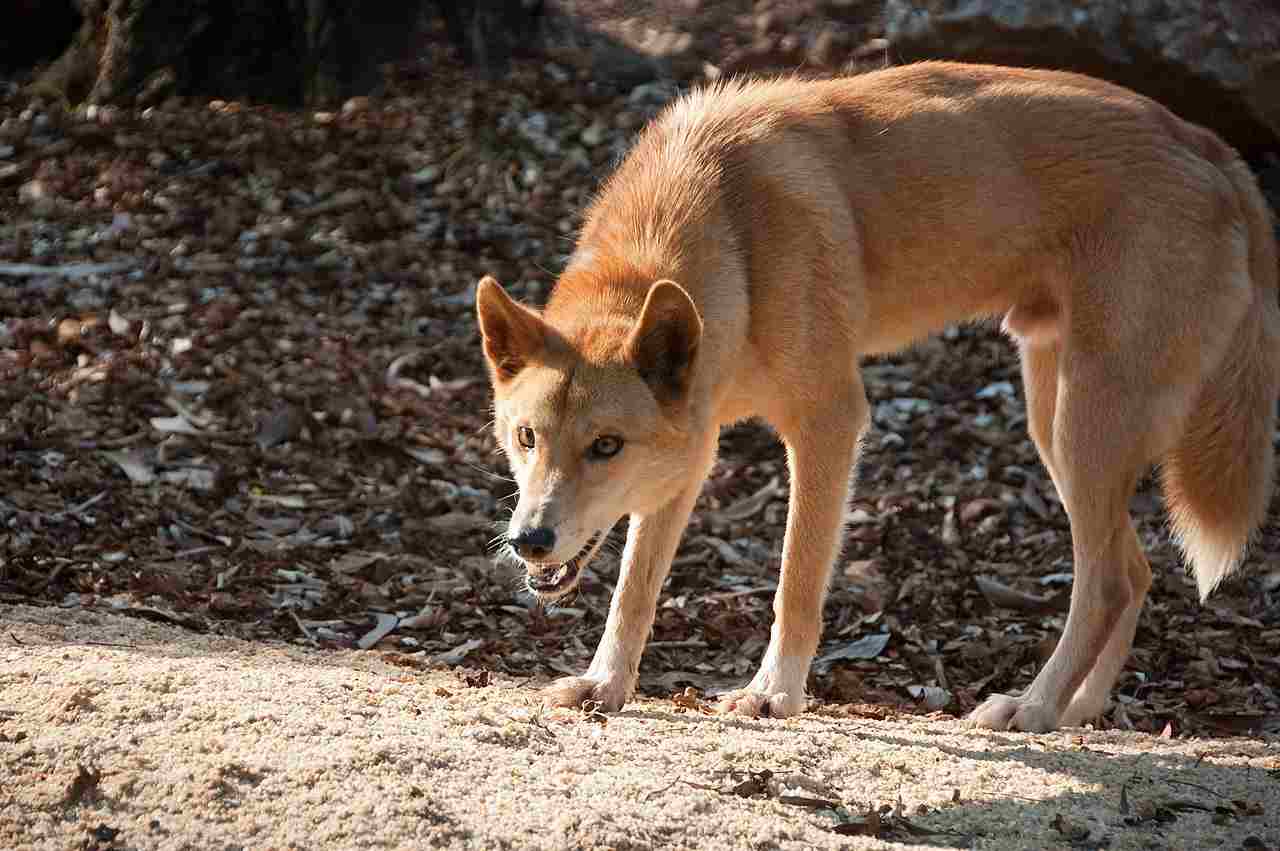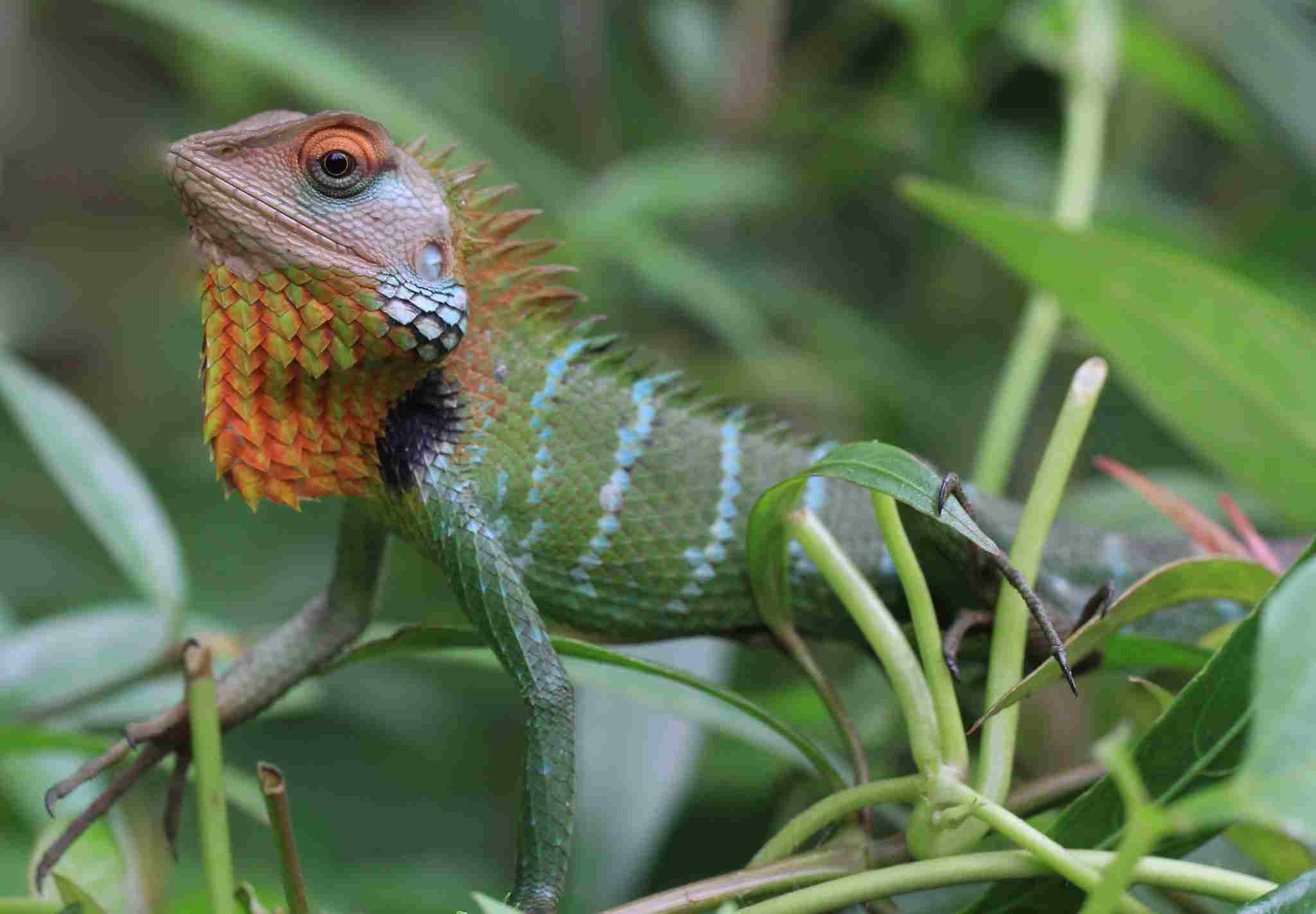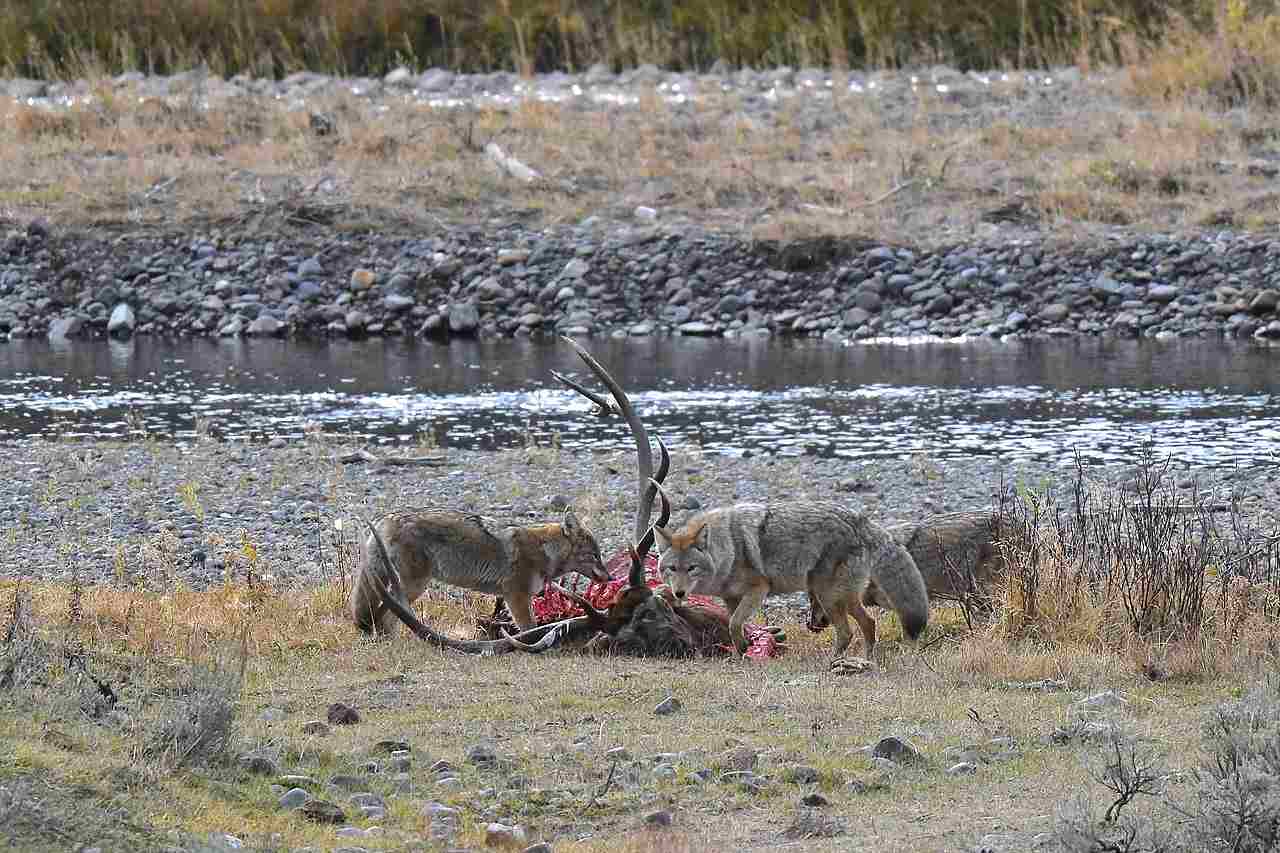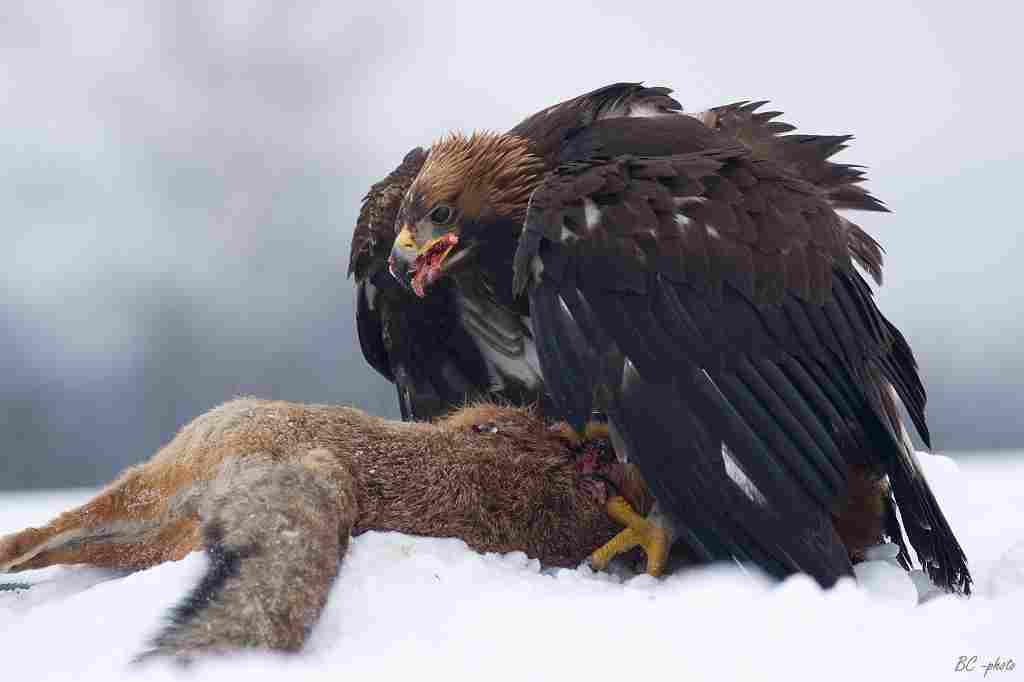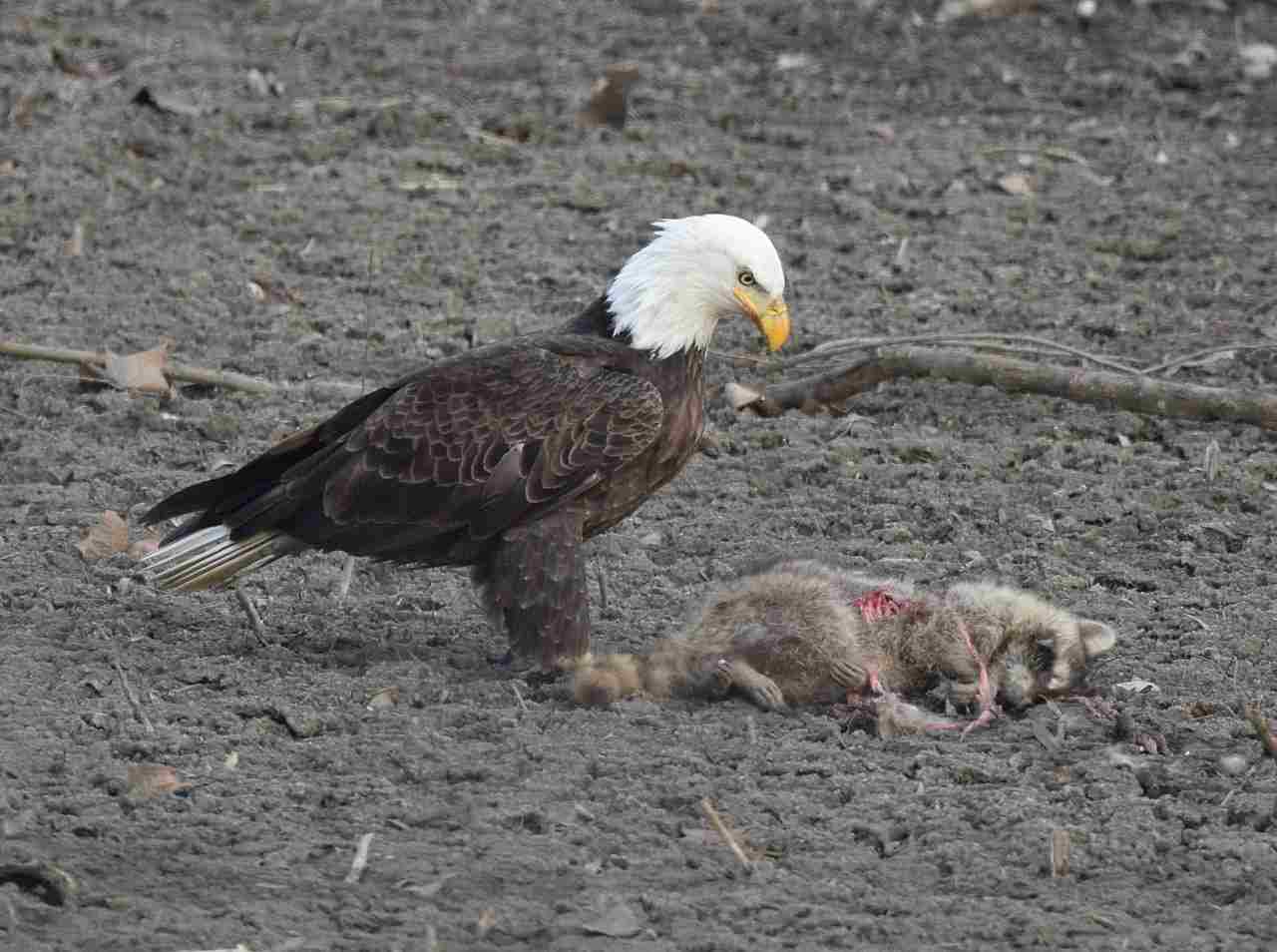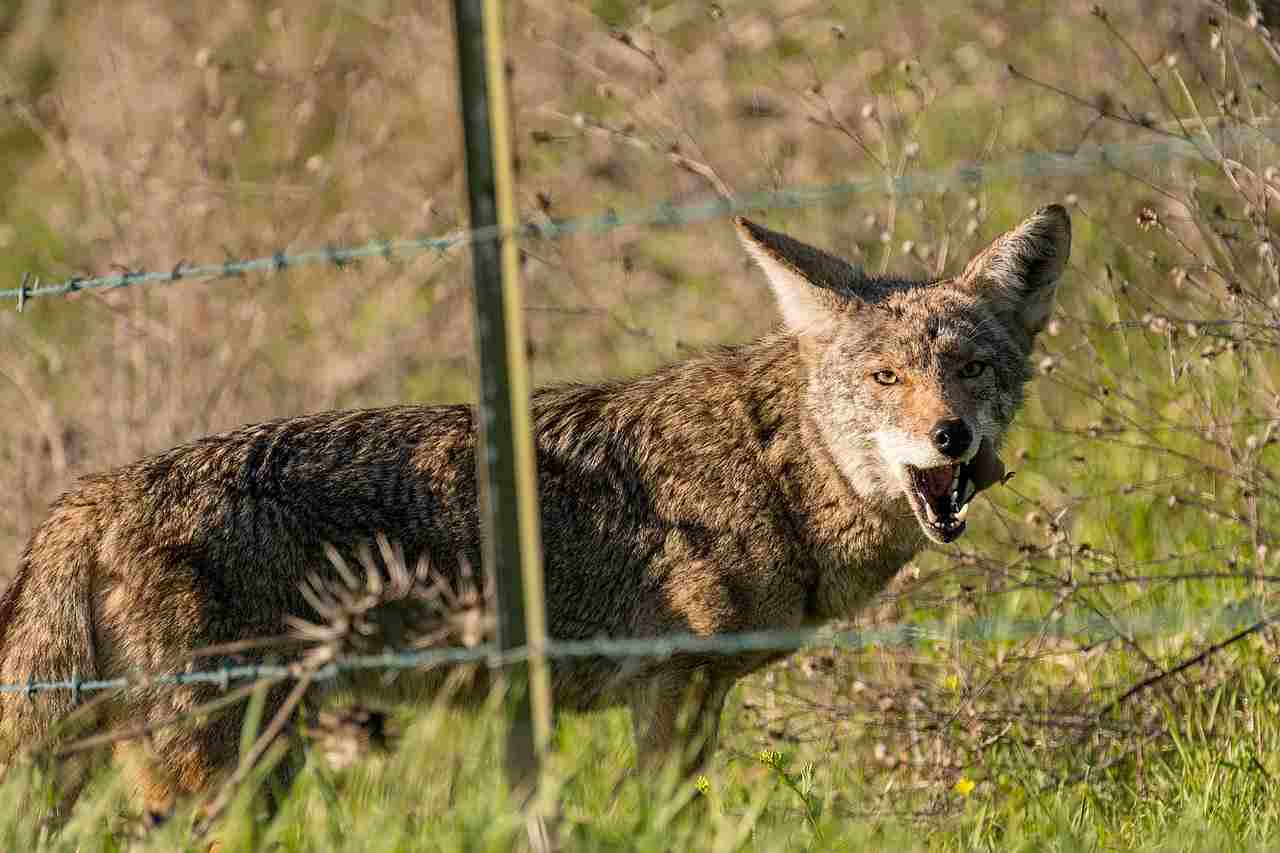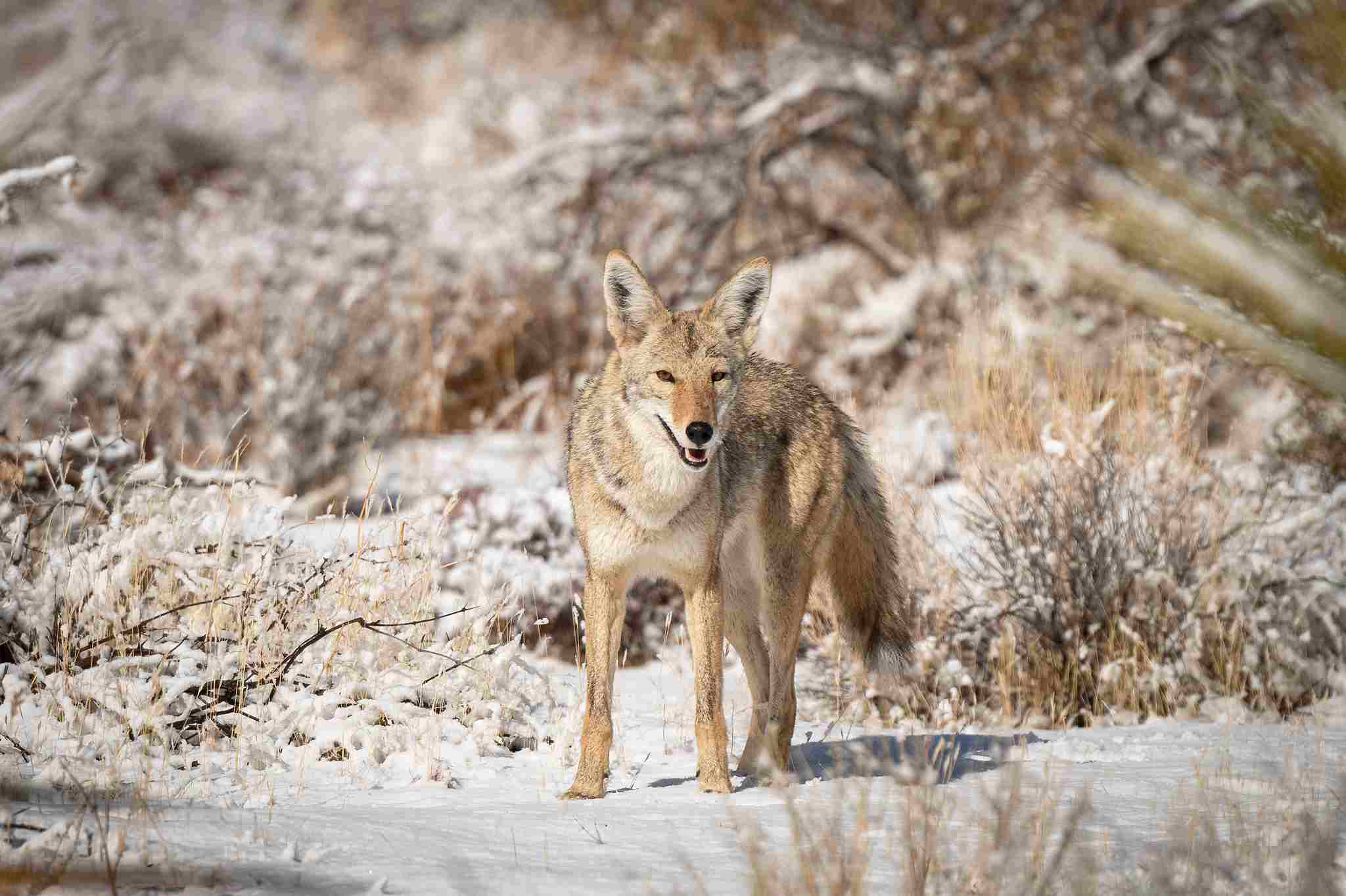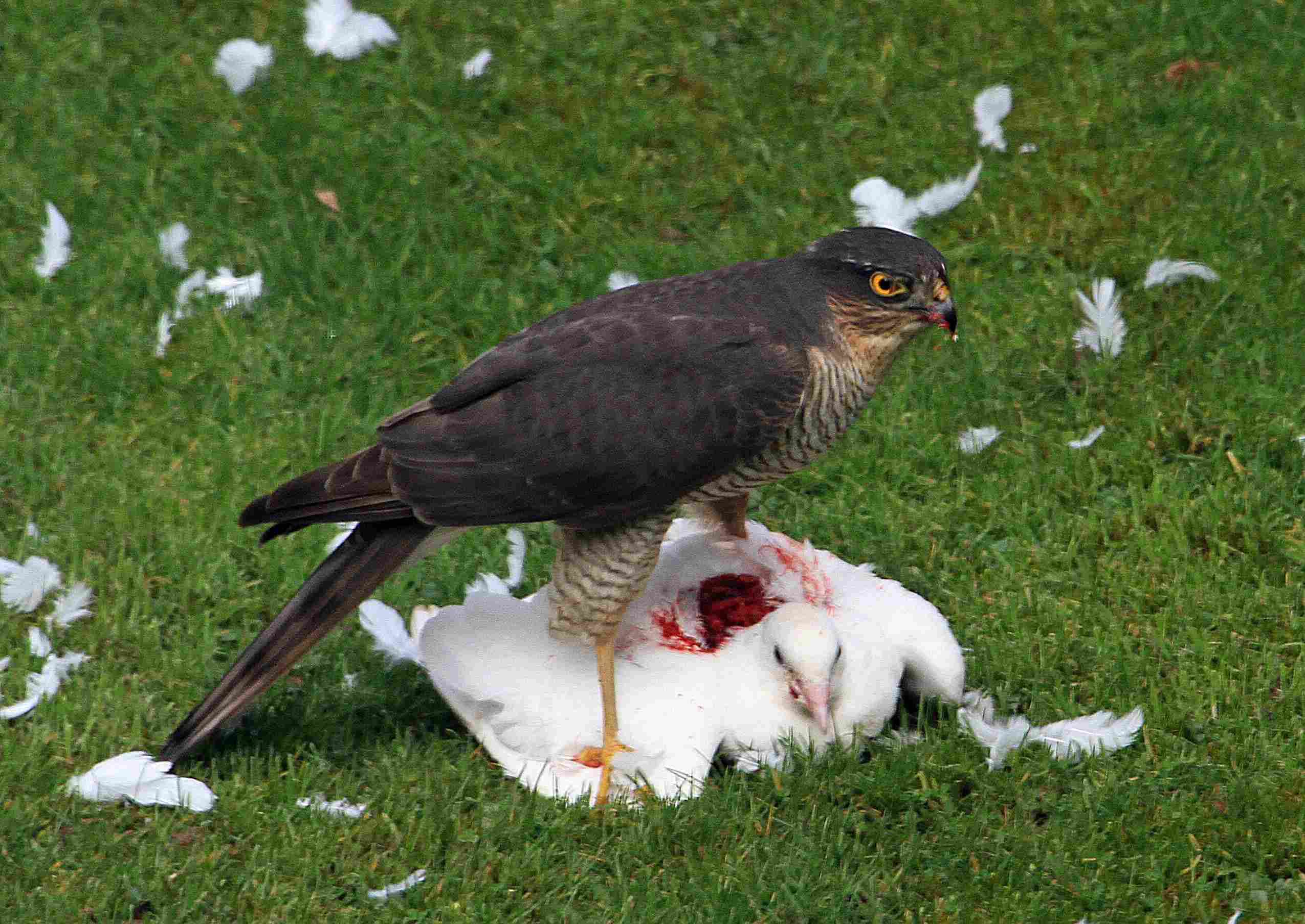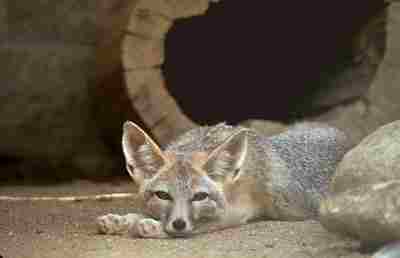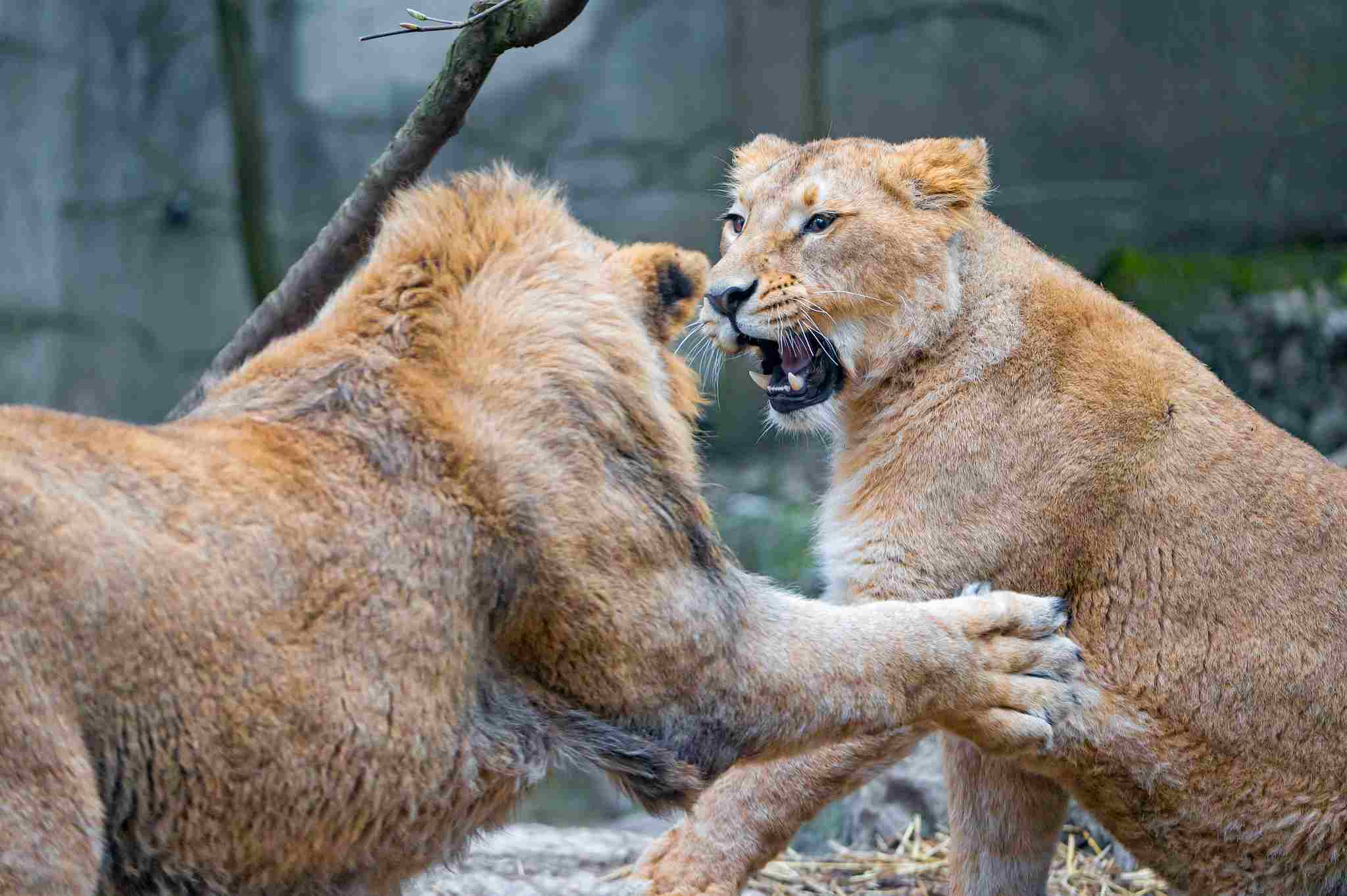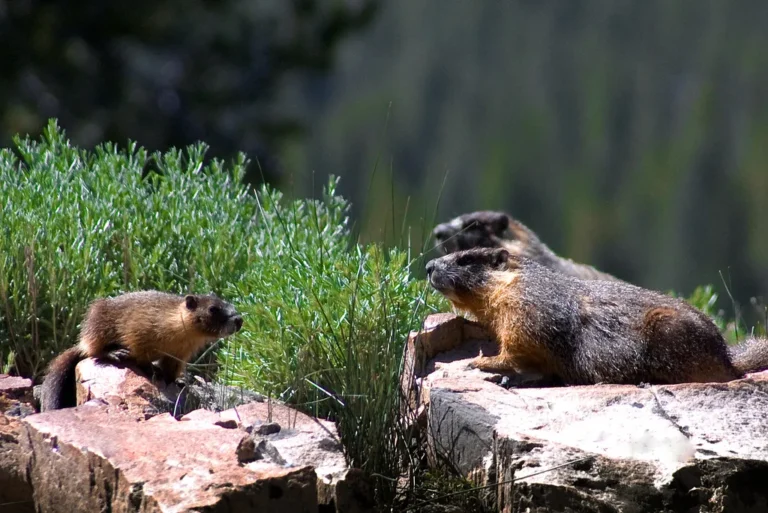11+ Predators in The Desert Ecosystem and Their Characteristics
1. Horned Viper
The Horned Viper is a highly specialized predator found in desert environments. Recognizable by the distinctive horn-like scales above its eyes, this snake blends effortlessly into its arid surroundings. Its sandy coloration provides excellent camouflage against the desert terrain, allowing it to ambush unsuspecting prey. The Horned Viper primarily preys on small mammals, birds, and lizards. It typically remains motionless beneath the sand, waiting for an opportunity to strike with lightning-fast speed.
Despite its small size, the Horned Viper possesses potent venom, which it uses to immobilize prey quickly. Its venom contains hemotoxins that break down tissue and blood cells, allowing the viper to consume its prey with minimal struggle. This predatory adaptation makes the Horned Viper a formidable hunter in its desert ecosystem. Its unique horns, specialized habitat, and predatory techniques contribute to its reputation as one of the desert’s most intriguing and deadly inhabitants.
2. Scorpion
Scorpions are quintessential desert predators known for their menacing pincers and venomous stingers. Thriving in harsh, arid conditions, these arachnids are primarily nocturnal, emerging at night to hunt for prey. Scorpions have a wide diet that includes insects, spiders, and even small vertebrates. They rely on their large pincers to grasp and subdue prey, while their venomous sting delivers a potent cocktail that paralyzes their victims, ensuring a meal.
The adaptability of scorpions to desert environments is remarkable. They can slow their metabolism to survive long periods without food or water, and their thick exoskeletons protect them from dehydration. Scorpions are also excellent burrowers, creating underground shelters to escape the extreme desert heat. Despite their intimidating appearance, they play a crucial role in the desert ecosystem by controlling insect populations and serving as prey for larger predators.
3. Spider
Spiders in the desert encompass a diverse range of species, from orb-weavers to wandering tarantulas. Unlike their forest or jungle-dwelling counterparts, desert spiders have evolved unique adaptations to survive in arid landscapes. These adaptations include the ability to withstand high temperatures, efficient moisture retention, and specialized hunting techniques. Many desert spiders rely on stealth and patience, lying in wait for prey or using intricate webs to trap unsuspecting insects and small vertebrates.
One iconic desert spider is the Desert Recluse, which uses a web to create a secure hiding spot during the day and ventures out at night to hunt. Desert spiders play an important ecological role, controlling insect populations and providing food for other predators. Their adaptability to the harsh desert environment underscores their resilience and importance in maintaining the balance of desert ecosystems.
4. Hawk
Hawks are powerful avian predators found in desert regions, where they soar high above the landscape, using their keen eyesight to spot prey. These birds of prey have sharp talons and strong beaks, making them formidable hunters. In the desert, hawks typically prey on small mammals, reptiles, and other birds. Their ability to fly at great speeds and change direction quickly gives them an advantage when hunting in open desert terrain.
Hawks often build their nests in high places, such as cliffs or tall cacti, to gain a vantage point over the surrounding landscape. Their excellent vision allows them to spot prey from a distance, swooping down with precision to capture their next meal. Hawks play an essential role in desert ecosystems, helping to control populations of smaller animals and contributing to the food chain’s balance.
5. Eagle
Eagles are among the most iconic predators in the desert, renowned for their strength, keen eyesight, and formidable hunting skills. These large birds of prey use their broad wingspans to glide effortlessly over vast desert landscapes, scanning for signs of movement below. Eagles prey on a wide range of animals, including small mammals, reptiles, and even other birds. Their talons are powerful enough to capture and hold struggling prey, while their sharp beaks are designed for tearing flesh.
In desert environments, eagles often build their nests on high cliffs or isolated rock formations, providing them with a strategic view of the terrain. This elevated position allows them to spot prey from a great distance. Eagles are apex predators in the desert ecosystem, helping to maintain ecological balance by regulating populations of smaller animals and preventing overpopulation. Their majestic presence and hunting prowess make them a symbol of strength and freedom in many cultures.
6. Coyote
Coyotes are highly adaptable predators that thrive in a variety of environments, including deserts. Known for their intelligence and cunning, coyotes are skilled hunters that prey on small mammals, birds, reptiles, and insects. They are also opportunistic scavengers, feeding on carrion and human refuse when available. Coyotes are typically most active during dawn and dusk, using the cover of low light to stalk their prey with stealth and precision.
In desert regions, coyotes often travel in small packs or pairs, which allows them to cooperate during hunts and take down larger prey. Their adaptability has allowed them to survive and even thrive in areas with human development, leading to occasional conflicts with people. Coyotes play a crucial role in maintaining the balance of desert ecosystems by controlling populations of smaller animals and serving as scavengers, helping to recycle nutrients back into the environment.
7. Mountain Lion
Mountain lions, also known as cougars or pumas, are apex predators in desert ecosystems, known for their strength, agility, and stealth. These large felines are solitary hunters that primarily prey on deer, but in desert environments, they will also hunt smaller mammals, such as rabbits and hares. Mountain lions are excellent climbers, capable of scaling steep cliffs and rocky outcrops with ease, which provides them with a tactical advantage when hunting.
In the desert, mountain lions tend to be more active during twilight and night, avoiding the harsh daytime heat. They rely on their keen senses to detect prey, and their powerful muscles allow them to sprint short distances to capture their target. As apex predators, mountain lions play a vital role in maintaining the balance of desert ecosystems, regulating populations of prey species and preventing overgrazing. Despite their elusive nature, mountain lions are a critical part of the desert’s intricate food web.
8. Dingo
Dingoes, Australia’s native wild dogs, are versatile predators that inhabit a variety of environments, including deserts. They have adapted well to the arid landscapes, where they primarily hunt small mammals, birds, and reptiles. Dingoes are highly intelligent and social animals, often hunting in groups to improve their chances of success. They are known for their agility and keen sense of smell, which aid them in tracking and capturing prey in the challenging desert terrain.
In the desert, dingoes play a crucial role in maintaining the balance of the ecosystem. By controlling populations of small to medium-sized prey, they help prevent overgrazing and reduce competition among other predators. Despite their importance, dingoes face threats from habitat loss and conflict with humans, leading to efforts to protect and manage their populations to preserve their role in Australia’s unique desert ecosystems.
9. Monitor Lizard
Monitor lizards are among the most formidable reptiles in desert environments. Known for their size and strength, these lizards have a varied diet that includes small mammals, birds, eggs, and other reptiles. Their powerful tails and sharp claws make them formidable hunters, capable of taking down substantial prey. Monitor lizards are often found near rocky outcrops or sparse vegetation, where they can hide and ambush unsuspecting animals.
In desert settings, monitor lizards use their agility and stealth to hunt. They are also scavengers, feeding on carrion when available. Their role as predators and scavengers contributes to the desert ecosystem’s health by helping to control pest populations and recycle nutrients. Monitor lizards are highly adaptable and resilient, making them successful survivors in harsh desert environments.
10. Snake
Snakes are a diverse group of predators in desert environments, with species ranging from small garter snakes to large constrictors. In deserts, snakes play a vital role in controlling populations of rodents, birds, and other small vertebrates. They use a variety of hunting techniques, from ambushing prey to actively pursuing it. Some snakes in the desert, like the rattlesnake, have venomous bites, allowing them to immobilize prey quickly and efficiently.
Desert snakes have evolved adaptations to survive in harsh conditions, such as burrowing to escape the heat and relying on efficient water conservation mechanisms. Their varied diets and predatory skills contribute to the balance of desert ecosystems, where they help manage populations of prey species. Despite their sometimes fearsome reputation, snakes are essential for maintaining the ecological equilibrium in desert environments.
11. Kit Fox
The Kit Fox is a small, agile predator native to desert environments, particularly in North America. Characterized by its large ears and slender build, the Kit Fox has evolved to thrive in the harsh conditions of arid landscapes. It primarily hunts small mammals, birds, and insects, often relying on its keen senses of hearing and smell to detect prey. Kit Foxes are nocturnal, using the cover of night to avoid the heat of the day and to hunt with stealth.
These foxes are also skilled diggers, creating intricate burrows to escape the extreme desert temperatures. Their adaptability and ability to thrive in sparse environments make them an essential part of the desert ecosystem. By controlling populations of rodents and other small prey, they contribute to the ecological balance. Despite their diminutive size, Kit Foxes play a significant role in maintaining the health of desert habitats.
12. African Wild Dog
African Wild Dogs, also known as Painted Dogs, are among the most social and cooperative predators in desert environments. These canids are known for their striking coats, characterized by unique patterns of black, white, and brown. African Wild Dogs are highly effective hunters, often working in packs to bring down prey much larger than themselves, including antelope and wildebeest. Their teamwork and coordinated hunting strategies give them a distinct advantage in the harsh desert landscapes of Africa.
In desert ecosystems, African Wild Dogs play a crucial role in regulating populations of large herbivores, which in turn helps maintain the balance of vegetation and other wildlife. Despite their effectiveness as predators, African Wild Dogs face significant threats from habitat loss, human conflict, and disease. Conservation efforts are crucial to ensuring their survival and preserving their role in maintaining healthy desert ecosystems. Their presence serves as an indicator of a thriving, balanced environment in the desert regions of Africa.
*Summary
-
Horned Viper: A venomous snake with horn-like scales, camouflaged in desert sand, hunting small mammals and birds through ambush; uses potent venom to immobilize prey.
-
Scorpion: A nocturnal arachnid with large pincers and venomous stinger; hunts insects, spiders, and small vertebrates; capable of surviving long periods without food or water.
-
Spider: Diverse desert spiders, including orb-weavers and tarantulas; specialized to withstand high temperatures; uses webs or ambush tactics to capture prey.
-
Hawk: Aerial predator with keen eyesight and sharp talons; preys on small mammals, reptiles, and other birds; builds nests on high places for vantage.
-
Eagle: Large bird of prey with broad wingspan and powerful talons; hunts small mammals, reptiles, and other birds; nests on high cliffs or rock formations.
-
Coyote: Highly adaptable predator, hunting small mammals, birds, and reptiles; operates in small packs or pairs; opportunistic scavenger.
-
Mountain Lion: Large, solitary feline predator; primarily hunts deer but also smaller mammals; active during twilight and night; maintains balance in desert ecosystems.
-
Dingo: Australia’s wild dog; versatile predator that hunts small mammals and birds; highly intelligent and social, hunting in groups; vital for maintaining ecological balance.
-
Monitor Lizard: Large reptile with a varied diet including small mammals and birds; uses agility and stealth to hunt; also scavenges carrion.
-
Snake: Diverse desert snakes, including venomous and non-venomous species; controls populations of rodents and other small vertebrates; adapted to desert conditions.
-
Kit Fox: Small, nocturnal predator with large ears; hunts small mammals, birds, and insects; skilled digger, creating burrows to escape desert heat.
-
African Wild Dog: Highly social and cooperative predator; hunts in packs, bringing down larger prey; plays a crucial role in regulating herbivore populations.
| Predator | Characteristics |
| Horned Viper |
Venomous, horn-like scales, ambushes small mammals and birds, uses potent venom.
|
| Scorpion |
Nocturnal, large pincers, venomous stinger, survives without food/water for long periods.
|
| Spider |
Diverse species, uses webs/ambush, adapted to high temperatures.
|
| Hawk |
Keen eyesight, sharp talons, hunts small mammals, reptiles, other birds; nests on high places.
|
| Eagle |
Large bird of prey, broad wingspan, powerful talons, nests on cliffs; hunts small mammals, reptiles, other birds.
|
| Coyote |
Adaptable, hunts small mammals, birds, reptiles; opportunistic scavenger, operates in small packs/pairs.
|
| Mountain Lion |
Large, solitary feline, hunts deer and smaller mammals; active during twilight and night.
|
| Dingo |
Australian wild dog, versatile, hunts small mammals and birds; highly intelligent and social.
|
| Monitor Lizard |
Large reptile, varied diet, uses agility and stealth; also scavenges carrion.
|
| Snake |
Diverse species, controls rodent populations; venomous and non-venomous; adapted to desert conditions.
|
| Kit Fox |
Small, nocturnal predator, skilled digger; hunts small mammals, birds, and insects.
|
| African Wild Dog |
Highly social, hunts in packs; brings down larger prey; regulates herbivore population
|
